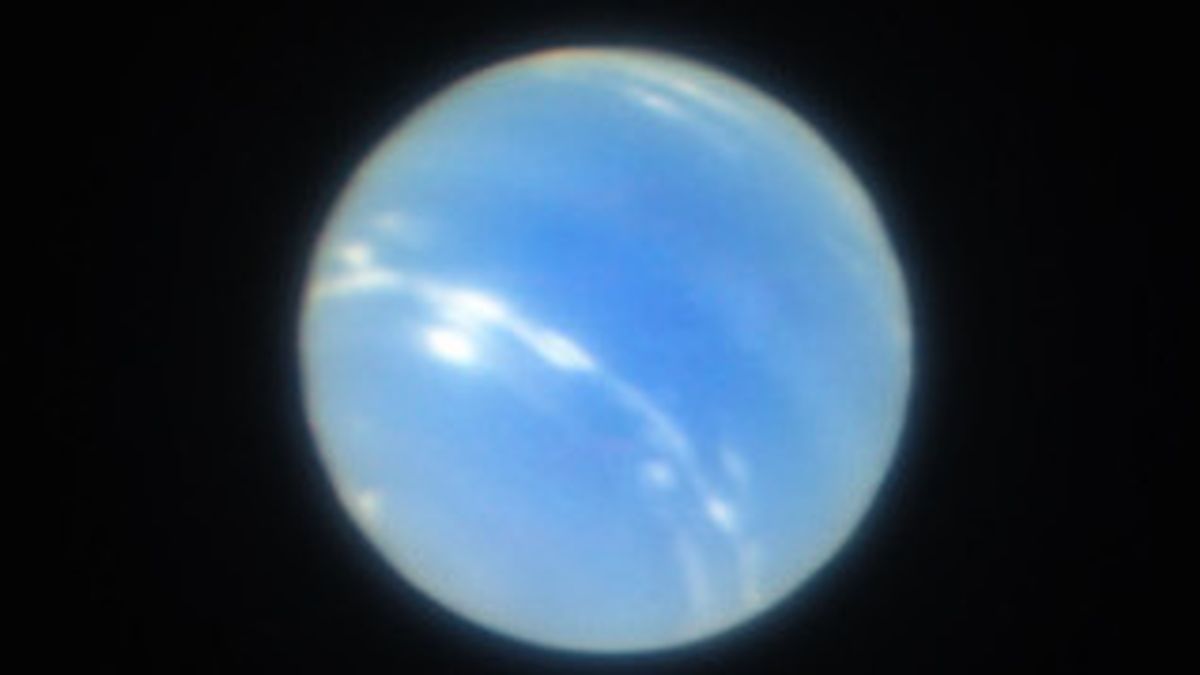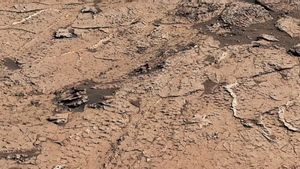JAKARTA - Planet Neptune is known to be filled with clouds in its atmosphere, apparently supported by the Sun that shines on the Earth. Scientists managed to uncover this puzzle.
Armed with NASA's Hubble Space Telescope and the WM Keck Observatory as well as data from the Lick Observatory, scientists obtained observational data on how solar activity affects the weather in Neptune.
Observations found that sometimes the planet has clouds in its atmosphere and at other times almost nothing. Even in 2019, the cloud level in Neptune dropped drastically for no reason.
"Even now, four years later, the latest image we took last June still shows the clouds have not returned to their original level," research chief Erandi Chavez of the Astrophysical Center said in a statement.
"This is very interesting and unexpected, especially because the previous low Neptune cloud activity period was not as dramatic and prolonged," he added.
The scientists then discovered the relationship between the number of clouds and the solar cycle, which is a pattern of activity for 11 years through which the Sun passes.
At certain times, the number of sunspots and bursts increases, which sends more ultraviolet (UV) radiation to the Solar System.
The radiation appears to affect clouds in Neptune, as research results show more than 30 years of data, many clouds appear two years after the peak of the solar cycle.
They, scientists argue the two-year gap is due to a chemical process that begins in the planet's atmosphere and takes time to produce clouds.
"This extraordinary data gives us the strongest evidence that Neptune's cloud cover correlates with the solar cycle," said senior scientist Imke de Pater, as quoted by Digital Trends, Monday, August 21.
"Our findings support the theory that the Sun's UV light, when strong enough, can trigger photochemical reactions that produce Neptune clouds," he added.
VOIR éGALEMENT:
However, more work is needed. For example, an increase in UV sunlight can produce more clouds and fog, but it can also embezzle it, thereby reducing Neptune's overall brightness.
Hurricanes in Neptune rising from the interior of the atmosphere affect cloud cover, but are not linked to photochemically generated clouds and can therefore complicate the study of correlations with the solar cycle.
Sustainable observations of Neptune are also needed to see how long clouds that are barely present will last.
"We have seen more clouds in the latest Keck images taken at the same time as NASA's James Webb Space Telescope observing the planet, these clouds are specifically visible at north latitude and at high altitude, as expected from the increase observed in the solar UV flux for approximately 2 years," de Pater said.
With combined data from the Hubble Telescope, the Webb Telescope, the Keck Observatory, and the Lick Observatory will allow further investigation into the physics and chemistry leading to Neptune's dynamical appearance.
In turn it can help deepen scientists' understanding of not only Neptune, but also exoplanets, as many planets outside the Solar System are considered to have Neptune-like qualities.
The English, Chinese, Japanese, Arabic, and French versions are automatically generated by the AI. So there may still be inaccuracies in translating, please always see Indonesian as our main language. (system supported by DigitalSiber.id)












